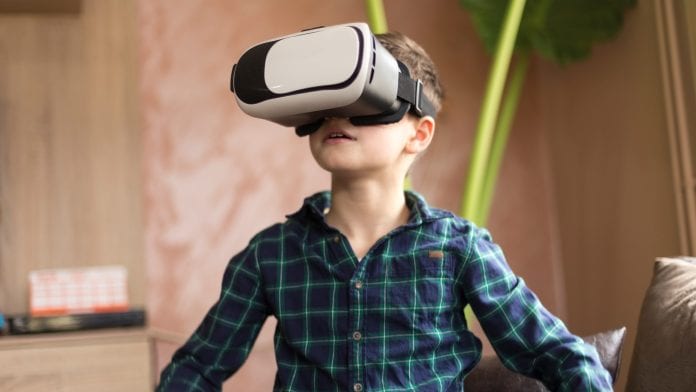
Virtual reality (VR) technology has proved effective in reducing the pain of dressing changes for children with burn injuries.
A study led by Dr Henry Xiang, Professor of Pediatrics and Epidemiology at Nationwide Children’s Hospital and Director of the Center for Pediatric Trauma Research, investigated the use of smartphone-based VR games during dressing changes in paediatric burn patients. The team concluded that the game was very effective in reducing patient-reported pain.
The research has been published in JAMA Network Open.
An alternative to opioids?
Currently, opioids are used to relieve the pain for many patients suffering with burn injuries. However, opioids do have serious adverse side effects. Prior studies have investigated alternative approaches to pain reduction in burn injury patients that focus on distraction, such as music, hypnosis, toys, and virtual reality (VR).
In the pilot study, designed as a randomised clinical trial, the research team divided 90 children, aged six to 17 years old, into three treatment groups: active VR, passive VR, and standard care (e.g., toys, tablet). These patients, most with second-degree burns, received outpatient care for burn injuries between December 2016 and January 2019.
The VR game, Virtual River Cruise, was designed specifically for the study by Nationwide Children’s Research Information Solutions and Innovation department.
Dr Xiang explained: “Two factors were considered for the game’s design. The first factor was a snowy, cooling environment within the game. The second factor was cognitive processing to encourage active engagement.”
Patients played the game using a smartphone and a headset. During dressing changes, which lasted approximately five to six minutes, patients in the active VR group actively engaged with the game. To stay still while playing the game, the patients tilted their head to aim a target. Patients in the passive VR group only watched the game.
Reduction in pain
Along with their caregivers, patients reported their perceived pain and subjective experience with the game in post-intervention surveys, whilst nurses evaluated the game’s clinical utility.
Among the three treatment groups, patients in the active VR group had the lowest overall pain scores. Most patients and their caregivers reported a positive experience with the game.
Nurses reported the game to be clinically useful in the outpatient setting. Previously, computer-based games were used during dressing changes. However, the computers’ bulkiness was not clinically practical.
Dr Xiang believes that the game’s ease of use and effectiveness means it can easily be played at home, to reduce pain during dressing changes.
Currently, Dr Xiang is leading a research project, funded by the Division of Emergency Medical Service of Ohio Department of Public Safety, to evaluate the feasibility and efficacy of VR games in reducing pain during burn dressing changes at home.
“The future research direction is to evaluate whether smartphone-based VR games have an opioid-sparing effect,” added Dr Xiang
























